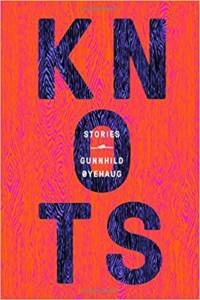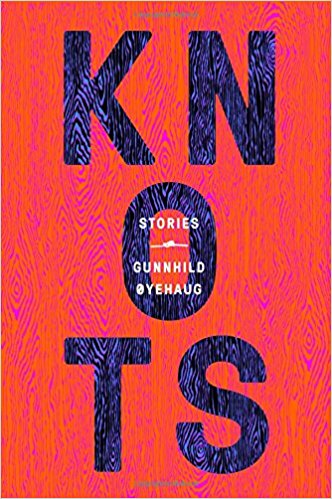Book by GUNNHILD ØYEHAUG (TRANSLATED BY KARI DICKSON)
Reviewed by OLGA ZILBERBOURG

It felt foreordained to open this short story collection by the Norwegian writer Gunnhild Øyehaug and find IKEA on the first page, as in: “…park the car outside IKEA.” IKEA, now based in the Netherlands, originated in Sweden, but to many foreigners, it personifies Scandinavia—pleasant and unthreatening. “Blah, how boring,” was my first thought. Then, trying to stave off disappointment at being welcomed by the all-too-familiar global brand, I told myself, “Well, I guess IKEA did start somewhere nearby. Perhaps, Scandinavians have a particular attachment to clean lines.” (Nervous laughter.) I know that stereotyping is a form of blindness; in practice, my desire for novelty trips me up and leads to overly broad generalizations. Like a tourist, I had to remind myself to check my expectations at the airport.
Gunnhild Øyehaug’s Norway begins, indeed, with the comfortably familiar. But the ground soon shifts to create a physical and emotional landscape that I had to work to understand. Its comforts are deceptive, and each reveal forces the reader to examine her premises. “Nice and Mild,” which opens on the IKEA parking lot, is a domestic tale. The protagonist is a family man whose all-too-capable wife provokes his intense social anxiety. The story is narrated from deep within the man’s point of view. For weeks, he has been unable to leave his couch. His trip to IKEA is a nearly impossible feat. As he advances through the parking lot to the doors of the store, he tries several mental strategies to overcome his anxiety, from imagining himself on the court with the tennis player Anna Kournikova to transposing his inner monologue from descriptive first person to second-person command mode: “You just have to concentrate on simple tasks, that you’re here to buy blinds.”
The narrator has a son, who needs the blinds for the window of his room, and a wife, who, he thinks, is smothering him and so aggravates his anxiety. This is the beginning of the twenty-first century and, though the narrator is tempted to blame his wife for his failures, we understand that his anxiety is related to his brain and body chemistry. The autumn day is nice and mild, as the title highlights. The day’s niceness might be what enables him to get inside the store. Approaching the window treatments department, he sees his wife buying the blinds. She smiles at him. The narrator repeats, “She actually smiles”—the story ends there. We look for meaning in that smile, we ask ourselves, what does this smile say about their marital relationship? Is his wife happy to see him? Is she gloating? Does she think she won by getting to the store before him? In Øyehaug’s world, the answer is immaterial. The narrator can’t see his wife as an independent agent, a person with her own agenda and interiority. Her very presence at the store comes across as a physical manifestation of his anxiety.
Øyehaug has submerged us so deeply within the narrator’s psyche that on the first read, I was convinced that the narrator had imagined his wife there, and I reread the story, looking for clues to support this theory. There’s no reason to suspect the narrator’s reliability. His wife did come to IKEA, but how or why remains outside the narrator’s perspective. To him, his wife is at IKEA because he’s afraid that she would be there.
The word “knots” has several definitions, but in this collection, they are physical manifestations of psychic states. In “Small Knots,” Kåre is born with an umbilical cord that nobody can cut, and he remains attached to his mother Marianne. When Kåre marries, Marianne sleeps in the bed nearby, behind a curtain. The arrangement troubles Kåre’s bride, and she leaves. Marianne dies—and still Kåre’s doctors are unable to cut the cord. They help him tie a small knot in it “to stop her death from feeding into you.” He has a gravestone-sized house built on top of Marianne’s grave, a house he can never leave. Even under such constraints, he remains open to romance and eventually meets a girl who frequents funerals because she suffers from loneliness and finds people at funerals welcoming. She moves in with Kåre, despite his umbilical attachment to his dead mother, her side of it now black. Together they plan to have a child.
This story’s fantastical element, so obviously a metaphor for the attachment between mother and son, is too familiar to hold the reader’s attention for very long. It makes us aware of what we demand of a story: tension. The reader expects the umbilical cord that ties Kåre and Marianne to break. It must break. When? How? Finally it dawned on me that it would not break. Why should it? This is the age of attachment parenting. The bond between a mother and son doesn’t need to weaken, nor does its strength need to threaten the son’s adult relationships. Right?
Though Kåre’s bride’s inability to contend with this bond would strike many readers as normal, Øyehaug asks us to question this. Before she leaves, she bites the cord “with all her might,” hurting Kåre and Marianne. The mother’s death puts a kink in the bond but doesn’t break it. Kåre finds a much better match in the girl who likes funerals. Their life is extremely limited by the confines of Kåre’s tiny abode on top of Marianne’s grave, but the girl is happy. When she wishes to have a baby, he warns her, “You might get a child with a umbilical cord like mine,” and she says, “I don’t want anything else!” To her, the unbreakable bond is a gift. Who’s the balanced one in this situation? I was caught off guard by this twist—attachment theory taken to an absurd extreme—which felt deeply unsettling.
Øyehaug’s background includes a graduate degree in Comparative Literature from the University of Bergen—mine is from San Francisco State University, so I appreciate the ways that a background in different national languages and literatures alters one’s imagination. One story, “A Renowned Engineer,”— subtitled “Norwegian Essay”— features the French symbolist poet Arthur Rimbaud as a protagonist. I thought I was following the narrative until the end, when Rimbaud dreams about having an engineer son “who would get on in the world and do well in life.” I have a general sense that this piece has to do with the vocation of an artist, sexuality, bourgeois morality—but the subtitle makes me wonder. Is Øyehaug satirizing something peculiar to Norway? A particular style of essay-writing? Is she suggesting that Norwegian character is formed by an odd mix of poetry and engineering? Why did the author chose Rimbaud to embody this line of inquiry? Perhaps if I were better informed about Rimbaud or Norway or how Norwegians view Rimbaud, I would understand the story better. But it seems a lot to ask of the reader.
Øyehaug has been publishing books since 1998, and her oeuvre includes a collection of poetry and two novels. She has won prestigious prizes, and one of her novels was made into a feature film in Norway. “Knots” was her second book, originally published in 2004. Translator Kari Dickson has also translated popular and literary fiction, including children’s books and crime novels. She delivers the pieces in measured, contemporary language which can be shocking when the narration is at its most distant: “Frank has a nice cock, Eva thinks. His cock goes in and out of her and she thinks it’s very nice.”
In 2010, I read a story by Øyehaug in McSweeney’s Issue 35. Published within a section dedicated to Norwegian writers, the piece stood out. “Two by Two” deals with adultery without taking sides. Alvin is cheating on Edel with Susanne, and they all try to keep appearances for the sake of Edel’s and Alvin’s son Thomas. In one remarkable passage, Øyehaug conflates the perspectives of all four characters, forcing us to hold them all at the same time. “Thomas is dreaming about a big crocodile egg in a nest, while Edel [picturing Alvin screwing Susanne] storms through the sitting room . . . Alvin comes all over Susanne’s buttocks. In the crocodile nest, the first baby crocodile breaks through the hard shell of the egg.” The horror of this situation cannot be resolved, and yet Øyehaug manages to find a surprising ending when the child’s dream seeps into reality. The dimensions of the possible expand—though, perhaps, this expansion is a signal of the psychological disturbance Thomas is taking on.
Seven years later, I recalled this passage in “Two by Two” vividly. Rereading the story, the last in the collection, I was struck anew by the understated fierceness in Øyehaug’s voice. It was a particular pleasure to see this story supported by others in the book, similarly fresh and avant-garde. The stories stand well on their own; a few have overlapping characters and storylines; read together, they give a sense of a strange community. I imagine a small town under a lot of snow, a bruised umbilical cord twisting through the streets, each inhabitant tied to it with an unbreakable knot.
Olga Zilberbourg’s fiction has appeared in and is forthcoming from Feminist Studies, Epiphany, Narrative Magazine, Hobart, B O D Y, Santa Monica Review, J Journal, and other print and online publications.




